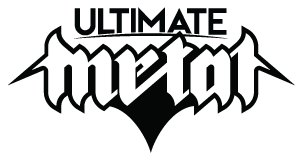The (Un)official Royal Carnage forum picture page
- Thread starter Erik
- Start date
You are using an out of date browser. It may not display this or other websites correctly.
You should upgrade or use an alternative browser.
You should upgrade or use an alternative browser.
Chromatose
Squid pro quo
skyrefuge
Member
Any tips? I'm going to a crazy ass buddhist ceremony in the mountains at night that will only be lit by torches. I really want to get some good shots of it.
Get a new camera?
The temple photo was a 1-second exposure, and it's impossible to hold your hand steady for that long; it's impressive you were able to keep it as steady as you did. But the ISO level was only 320. Your camera can go up to ISO 1000. Every doubling of the ISO-number doubles the light-gathering ability. So if you had taken that picture at ISO 1000, it would have required only a 1/3rd-second exposure, which is still really hard to hand-hold, but you've got a 3x better shot at it.
The tradeoff to cranking up the ISO, as you've probably discovered, is that the pictures get noisy and grainy. So in general you want to keep the ISO as low as you can, but if the only way to get a non-blurry shot is to crank the ISO, then a grainy photo might be better than no photo at all.
If possible, it's better to take zoomed-out (wide-angle) shots than zoomed-in shots, for two reasons: the light-gathering capability of your particular lens is greater when zoomed-out, and the effects of hand-shake aren't as visible when zoomed-out.
In some situations, it might be good to turn down the Exposure Compensation to -1 or even -2. Your camera might see a dark scene and try to make it look brighter, by increasing the exposure time. But you might actually want your picture to look fairly dark (to reflect what the scene actually felt like), so adjusting the Exposure Compensation down will tell the camera to not expose the picture for as long as it wants to.
Remember if that you have any moving objects (people), it doesn't matter how steady you can hold the camera. At any exposure time lower than 1/30th, you're likely to see some motion-blur.
In general, the best "trick" for low-light conditions is to just take as many photos as you can, and occasionally you might get lucky: either people stopped moving for that instant, or you happened to hold perfectly steady.
I bought a new lens specifically so I could get pictures inside Buddhist caves. It has Image Stabilization (IS), which counteracts the effects of hand-shake. Also, my camera (Canon Digital Rebel XT) has pretty low noise at high ISO values.
1/50sec w/ IS, ISO 1600

1/10sec, w/ IS, ISO 1600

If the torches don't light the whole scene adequately, sometimes it's enough to light a single face or object, or sometimes taking pictures of the light itself is good enough.
Front light (1/13sec, w/ IS, 1600 ISO)

Back light (1/10sec, no IS, 1600 ISO)

Light light (1/60sec, no IS, 1600 ISO)
Spot light (1/60sec, no IS, 800 ISO)
Neil
Tide In Mind Out
ct_thrash
- Mar 5, 2002
- 24,291
- 290
- 83
Hey Cara, you have the same camera I do, right? Any idea how to take good pictures with it at night without setting it on something (a tripod or what-have-you)?
This is probably the only clear picture I've ever taken at night or in a dark place and it was by setting my camera on a wall, putting on the night setting, and using the timer so my hand wouldn't move it and blur the picture.

Usually, they come out like this one that I snapped against the rules in a temple while a guard wasn't looking:

Any tips? I'm going to a crazy ass buddhist ceremony in the mountains at night that will only be lit by torches. I really want to get some good shots of it.
First of all, that top picture is breathtaking! But like Lurch said, you can raise the ISO. On mine there is an ISO setting which automatically shoots at 1000, but high ISO = graininess. I've found the best way to shoot in almost complete darkness on mine is to use a tripod (or any still surface), timer, and twilight setting. But then again with the twilight setting the subject must remain still as well.
I think you'd be best off using the automatic ISO setting or manually raising it yourself, as you may not need to go all the way up to 1000.
These are just some typical grainy results of using my automatic ISO setting in the dark or dimly lit places.



Less grainy results of ISO 200 and very still hands (less grain but more blur possible)



Krilons Resa
Jerry's married?!
dorian gray
Returning videotapes
- Apr 8, 2004
- 21,258
- 489
- 83
Susperia
Member
swizzlenuts
i'm sciencing as fast as i can
dorian gray
Returning videotapes
- Apr 8, 2004
- 21,258
- 489
- 83
Susperia
Member
Tide In Mind Out
ct_thrash
- Mar 5, 2002
- 24,291
- 290
- 83
E-bortion
Omae wa mo shindeiru
- Dec 23, 2004
- 3,508
- 4
- 38
- 38
Not that this would really apply to anyone here, but still. Meat Camp is happening, oh yeah.

 im so there. no mixing booze this time though... and no attempting ebow.
im so there. no mixing booze this time though... and no attempting ebow.Tide In Mind Out
ct_thrash
- Mar 5, 2002
- 24,291
- 290
- 83
no mixing booze this time though... and no attempting ebow.
riiiight
dorian gray
Returning videotapes
- Apr 8, 2004
- 21,258
- 489
- 83
Susperia
Member
Similar threads
- Replies
- 78
- Views
- 3K
D





